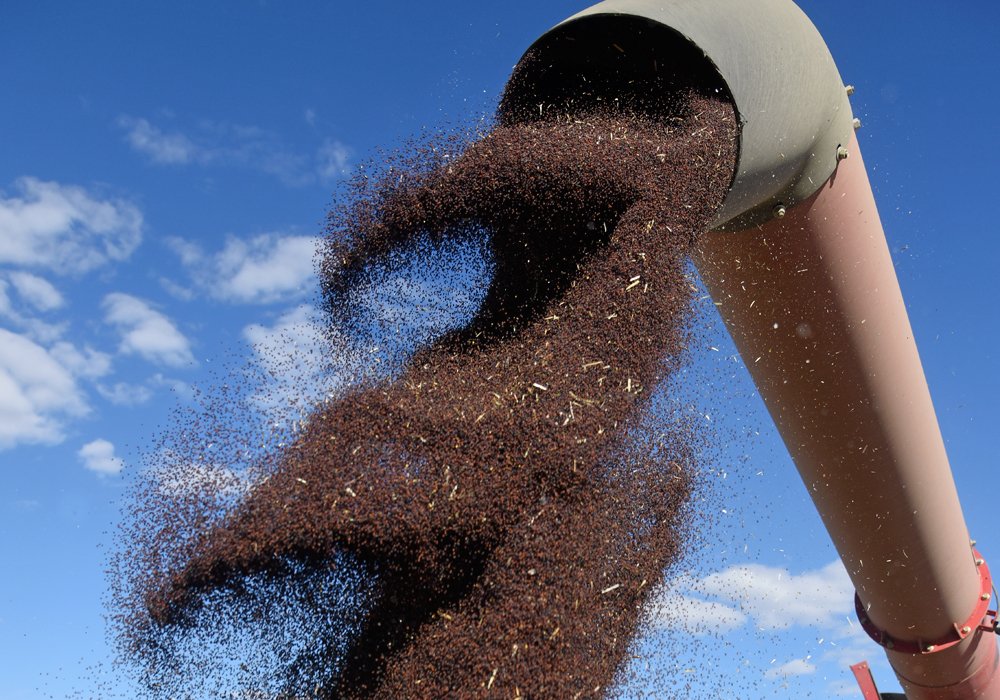Canola market continues to tighten

Oilseed and vegetable oil markets are expected to remain tight in 2021-22, and that means continued high prices, say international analysts.
The canola/rapeseed market is no exception, said Jacob Dehoust, senior market analyst with Archer Daniels Midland in Germany.
“The expectation is that rapeseed gets tighter looking ahead into 2021-22,” he told delegates attending the International Grains Council’s Grains Conference 2021.
Crusher demand from the European Union is forecast to remain steady at 23.7 million tonnes.
He is forecasting 17.9 million tonnes of EU rapeseed production, up from 17.2 million tonnes last year.
“The weather in the EU is very favourable for rapeseed production,” said Dehoust.
That means the region’s canola imports will shrink somewhat to six million tonnes, down from 6.4 million tonnes in 2020-21. Canada supplied one-third of the current year’s imports.
However, he noted that crusher demand could be much higher than forecast if EU biodiesel use returns to normal and China keeps buying huge volumes of rapeseed oil from the region.
EU biodiesel demand fell about 500,000 tonnes in 2020 due to COVID restrictions. That is one million tonnes in lost seed sales.
He thinks demand will fully recover in 2021, although it was off to a slow start for the first few months of the year.
In the meantime, an entirely new source of demand suddenly emerged for EU rapeseed oil with China purchasing 450,000 tonnes of the commodity in 2020-21, up from basically nothing a couple of years ago.
China needs to buy oil because it is not importing nearly as much seed due to a political dispute with Canada.
China’s total canola seed imports were 3.08 million tonnes in 2020-21, down from 4.47 million tonnes two years ago.
If China continues to buy that much oil from the EU and biodiesel demand rebounds as anticipated, then EU carryout stocks will get uncomfortably tight.
Dehoust is also forecasting extremely tight supplies in Canada for 2021-22.
Gustavo Idigoras, president of the Argentine Edible Oil Association, expects continued bullish conditions in the soybean market as well, driven primarily by rapidly expanding renewable diesel demand in the United States.
Renewable diesel demand is expected to rise by 41 percent in the U.S. in 2021-22, and that is just the start of what is expected to be an overwhelming new source of soybean oil demand for years to come.
That is going to restrict U.S. soybean oil exports in the coming years, but Argentina should be able to pick up the slack.
The Argentine government is about to implement new biofuel regulations that will result in a “strong reduction” in the use of vegetable oil for biodiesel production over the next 10 years.
That means Argentina, which is already by far the world’s leading exporter of soybean oil, supplying about half of global exports, should have even more to offer starting in 2021-22.
Brazil is also implementing new biofuel regulations, but the outcome is expected to be the polar opposite with mandates either staying the same or rising.
Darren Cooper, senior economist with the International Grains Council, said food demand for soybean oil has remained relatively stable over the past decade, averaging six to 6.5 million tonnes per year.
However, industrial demand for the commodity has been absolutely exploding and is expected to grow another 26 percent in 2021-22, largely because of the emerging U.S. renewable diesel demand.
Industrial demand for the oil is expected to reach 5.5 million tonnes in 2021-22, up from about two million tonnes 10 years ago. Industrial demand is rapidly approaching food levels for the commodity.
U.S. soy oil exports are expected to fall to about 650,000 tonnes in 2021-22, down from double that amount a couple of years ago. As well, the U.S. will likely start importing larger volumes of the commodity.
The one oilseed that may experience a cooling off in prices is sunflower seeds. Black Sea production fell by about five million tonnes in 2020-21 because of drought conditions. That led to export restrictions in Russia and Ukraine, which resulted in a doubling of sunflower oil prices.
Production is expected to fully rebound in 2021-22, easing supply concerns.
Andrii Paladii, head of vegetable oil trading with Kernel Company in Ukraine, said Ukraine planted 17 million acres of the crop and Russia more than 22 million acres this year.
“That’s a big supply,” he said.
Paladii expects that to result in a big price discount for sunflower oil versus soybean and other oils. He anticipates increased demand because of the reduced price.
Svitlana Synkovska, regional communications manager with Cotecna Inspection in Switzerland, said Ukraine and Russia account for three-quarters of world sunflower exports.
She agrees that acreage is up in the Black Sea region, but planting was seriously delayed by cold and wet weather.
Synkovska said summer weather will determine production levels, so it is too early to start talking about a larger crop.
In addition, she thinks Black Sea export restrictions could be in place for all of 2021-22, especially in Russia where half of the crop is consumed domestically.
She said Russia’s restrictions are far more onerous than Ukraine’s. The government has put a cap on sunflower oil prices at grocery stores, will be applying a 50 percent duty on seed exports starting in July and will have a floating tax on oil starting in September.
“The new season will not be boring,” she said.
Contact sean.pratt@producer.com
Source: www.producer.com

